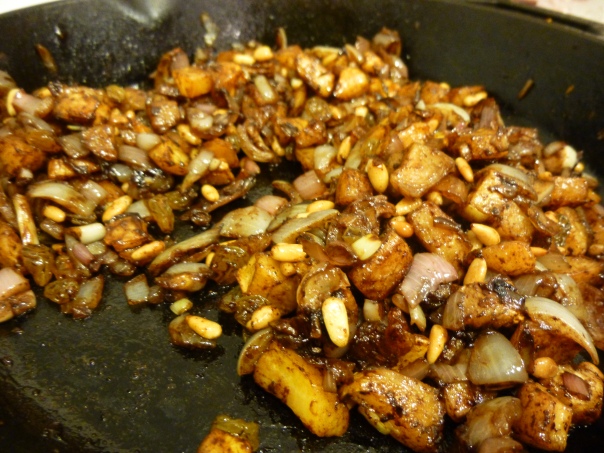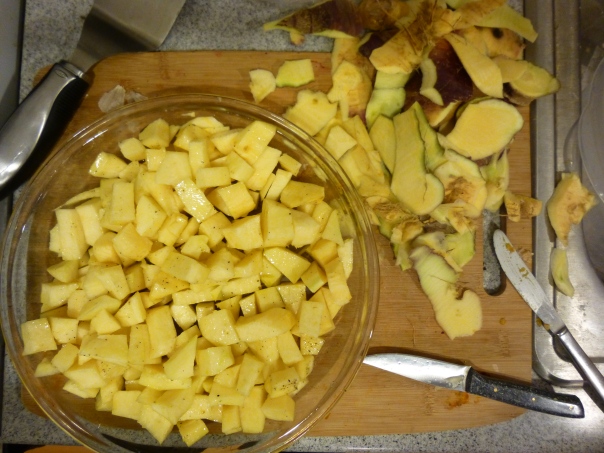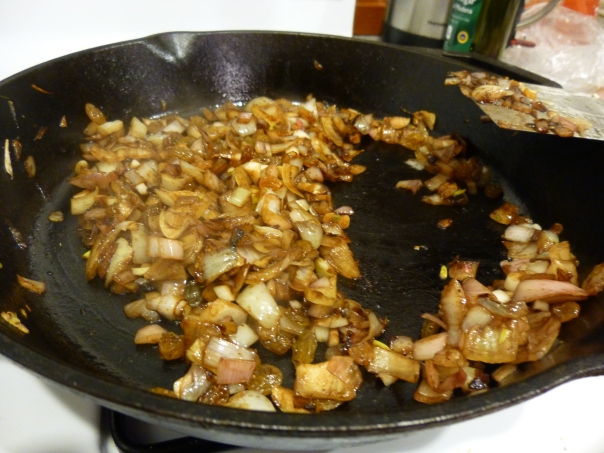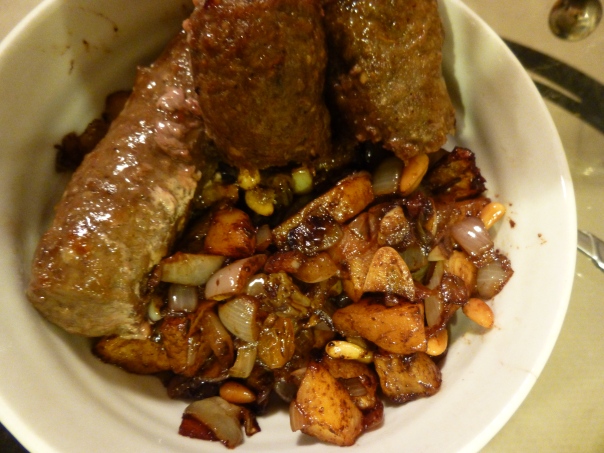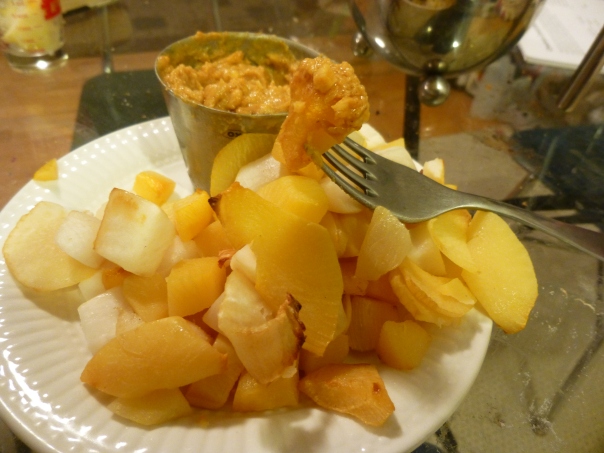
These are the items I have the most trouble using, so I’m going to assume it’s the same for you.
Most of the time I’ve just been roasting them in with other root vegetables, which is honestly a very good use. If you’re roasting a chicken, throw some chopped turnips in the bottom of the pan and they’ll soak up all the juices and be delicious. This particular use allows the actual turnip and rutabaga flavors (yep, they’re there and tasty, with the right accoutrements) to shine.
Before I get into sauces, though, I want to share some things. The first is that my last winter CSA share came last week. More turnips, rutabagas, parsnips, carrots, beets, cabbage, potatoes, garlic, onions, potatoes, squash. These are part of the “Maine Local Twenty” food products that are available all year long. By February, most of us are getting a little sick of winter, myself included. We have to keep finding new ways to use these same ingredients (not to mention new places to put snow). Fortunately, we have a little hope: the days are getting longer, seed catalogues are flying around everywhere, and many farms are signing people up for summer CSAs, encouraging us to dream about strawberries, cucumbers, and tomatoes.
There was a recent article in the Huffington Post about how CSAs help farms and deliberates a little on other models. Basically, you get to connect with a specific farm, and that creates a deeper connection to your community, the natural world, and enables you to actually understand what it takes to produce food. MOFGA has the best list that I’ve found of CSAs in Maine; if you live elsewhere you’ll have to do your own research. Actually, there are a few CSA fairs coming up soon, if you want to check out your potential farmers in person.
On another note, Nathanael Johnson of Grist (who I really like, by the way, and you should read all his things) just finished up his series of posts “Hungry Hungry Humans” exploring how we can feed the world into the future. His latest post synthesizes some of those discoveries. It’s definitely worth reading, but here’s a few tidbits about how we can feed the world: 1) Improve the lives of poor women and children, 2) Sustainable intensification through agroecology (this means more small farms), 3) Invest in infrastructure like roads, 4) Find new ways to provide capital/investment to those who need it. And of course 5) YOU can change your diet—eat less, less meat, and waste less. And find a good lentil recipe.
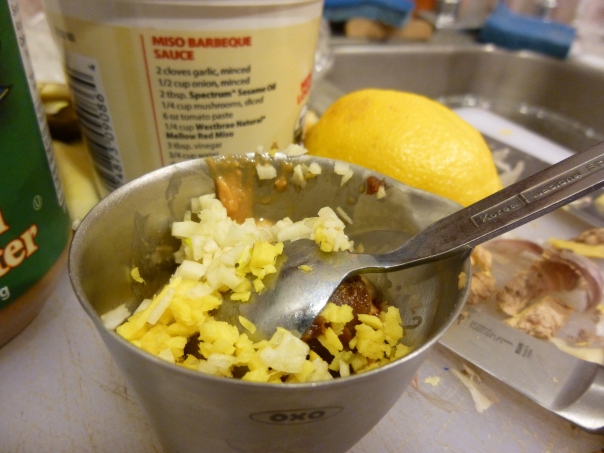
Okay, this isn’t a lentil recipe and I know I didn’t plan that right. But it is a vegetable recipe and one that you tend to eat slowly, which means you’ll consume less. So.
I also did the thing again where my mixing vessel was really not big enough for the things I was putting it in. You’d think I’d learn.
Rutabagas and turnips with peanut sauce Rutabagas and turnips Olive oil and salt Sauce: Peanut butter (your main ingredient, start with 1/4 cup or so. I like crunchy but it's up to you) Soy sauce (a few teaspoons—you can always add more) Miso (optional—a small teaspoon or so) Lemon/lime juice or rice vinegar (substitute apple cider vinegar if you have none) Minced ginger (a small knob) Minced garlic (a clove) Honey (a few drizzles) Minced chiles, chile flakes, or a little cayenne
Peel and chop the roots into 3/4 (ish)-inch cubes. Roast with some salt and oil in a hot (350ºF or so, it doesn’t matter too much here) oven, or if you’re tired of roasting things, sauté in a pan with a little oil for a few minutes, adding water and covering for a bit to get them all the way soft as necessary.
Meanwhile, stir together the sauce. The nice thing about this kind of condiment is that it’s very forgiving. You can add a little of this, a little of that, taste, adjust, eat half of it, make a new version, whatever. I added a lot of ginger and probably too much soy sauce to start, but with a little more peanut butter it all evens out. Add water if you want it to be saucier, or put it in a blender to make it smooth.
When your root veggies are soft, whichever way you’ve cooked them, dip them in the sauce and enjoy.
You can put this kind of sauce on whatever. I fried some tofu the next day and dipped that in the sauce along with root veggies for lunch; and actually the inspiration came from some friends making this for noodles a few weeks ago, mixed in with veggies, etc., for a giant dinner pot. Delicious.
Don’t forget to look at some local CSAs!
